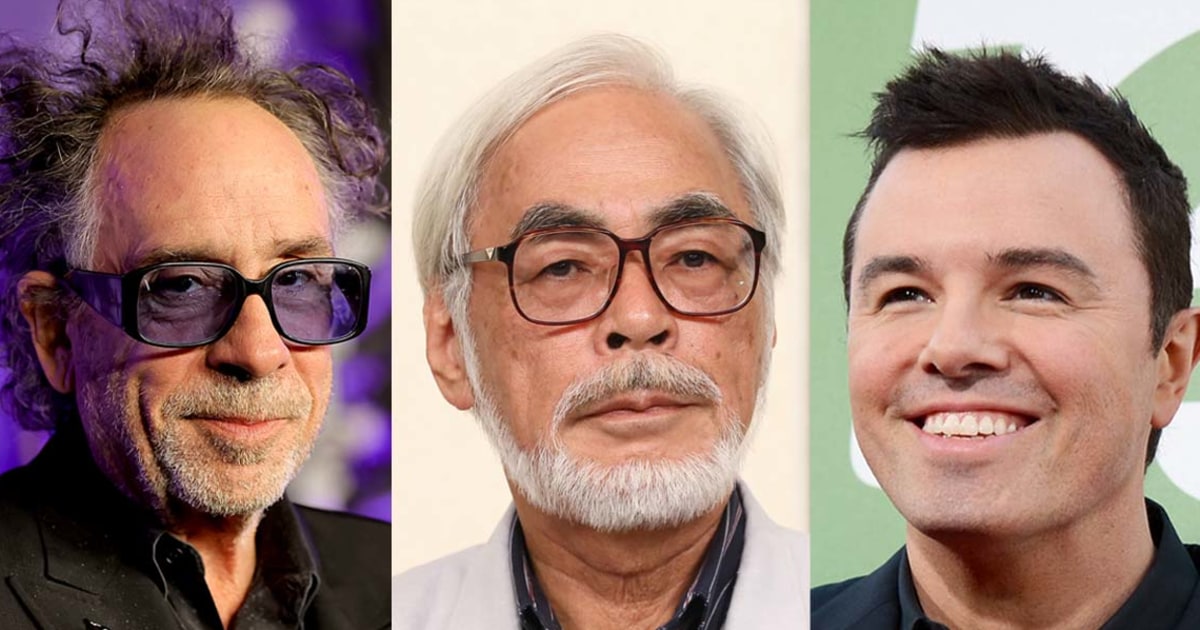
Thousands of artists — ranging from the late Norman Rockwell to the Oscar-nominated director Wes Anderson — have been named in a widely circulated list of people whose work was used to train a popular artificial intelligence art generator.
The 4,700-person list, which went viral on X after being shared by the artist Jon Lam last week, was used in a November court exhibit in a lawsuit against Midjourney, Stability AI, DeviantArt and Runway AI. The companies, which did not immediately respond to requests for comment, are accused of misusing copyrighted work from visual artists to train their generative AI systems.
Many artists online have specifically called out Midjourney, one of the most popular of a new class of AI programs that can create images based on text prompts, alleging that the company stole their work without their permission.
In addition to the court exhibit, some social media users also shared a link to a spreadsheet listing almost 16,000 more artist names as “proposed additions” to a "Midjourney Style List." Midjourney’s founder, David Holz, had allegedly shared the list in the company’s public Discord server in early 2022. Holz did not immediately respond to requests for comment.
The list has underscored many artists’ frustrations with the lack of regulation around AI-generated art, which has exploded in popular use over the past year with apps such as Lensa and Epik allowing users to pay to generate profile pictures and yearbook-style photos based on their likenesses.
But the rise of such trends has raised questions about whether it’s fair to profit from these mass-produced images when the AI models that create them are trained on and then imitating styles concocted by real-life artists.
In the amended class-action lawsuit filed by a group of artists, many of whom were named in Midjourney’s list, the plaintiffs argue that what is labeled as “artificial intelligence” was actually built around “human intelligence and creative expression, in the form of billions of artworks copied from the internet.”
“An AI image product simply divorces these artworks from the artists and attaches a new price tag. The profits from the misappropriation of these works can then flow directly into Defendants’ pockets,” the complaint stated. “But the artists who provided the intelligence and creativity—including Plaintiffs—were not asked for their consent. They were not given any credit. And they have not received one cent in compensation.”
Lam, who is not a plaintiff in the case, said public access to the document closed after he linked the spreadsheet in an X post that went viral last week. Still, an archive of the spreadsheet remains available online.
“It just seemed like they didn’t really put much effort into hiding anything because it was all public. So artists caught wind of this; we found the document,” Lam, a senior storyboard artist at Riot Games, said. “When you click on the Artists tab, you literally see thousands and thousands of artists that we know. And a lot of my friends have found themselves on these lists … and they didn’t even know that they were being trained on.”
Ever since generative AI began flourishing in 2022, artists have expressed suspicions that these programs were churning out images derived directly from their works rather than taking inspiration and innovating to create new art styles. It didn’t help that AI images often included what appeared to be scrambled artist signatures, and that users were able to request images drawn in the style of specific artists.
And as Midjourney continues to make money from subscriptions, which range from $10 to $120 for a monthly plan, some artists said that they can no longer keep up with a market that’s now saturated with machine-derived versions of their own works.
“Everybody was just too excited with these image generators to really care about how the sausage was made,” Lam said, adding, “A lot of my friends are struggling to pay their rent, pay their bills. Their rates for commissions are being slashed because people are losing value.”
Similar concerns have plagued creative industries across the board. In Hollywood, AI-related protections comprised a prominent part of labor unions’ negotiations with the major studios. The new SAG-AFTRA contract, ratified in December, incorporated new rules requiring producers to obtain actors’ consent and pay them in order to replicate their likenesses with AI.
In addition to Rockwell and Anderson, other major artists named in the exhibit include: Phil Lord and Christopher Miller, the filmmakers behind the “Lego” movies and “Spider-Man: Into the Spider-Verse”; Matt Groening, “The Simpsons” creator; Seth MacFarlane, “Family Guy” creator; Hayao Miyazaki, the mastermind co-founder behind Studio Ghibli; and Tim Burton, filmmaker and animator behind films such as “The Nightmare Before Christmas.”
Representatives for the filmmakers did not immediately respond to requests for comment.
Midjourney’s spreadsheet — which listed a total of more than 20,000 artist names as of early 2022 — included a variety of prominent figures, from classic painters and sculptors to contemporary cartoonists and animators, as well as many lesser-known artists.
Aside from specific artists, the spreadsheet also included time periods ranging from 1000–1400 CE to the present day, as well as various “punk” or “core” styles, such as “cyperpunk,” “cottagecore” and “zombiecore.”
Holz told Forbes in 2022 that he did not seek consent from artists who are still alive or whose works are still under copyright.
“There isn’t really a way to get a hundred million images and know where they’re coming from,” he said. “It would be cool if images had metadata embedded in them about the copyright owner or something. But that’s not a thing; there’s not a registry.”
"artist" - Google News
January 05, 2024 at 06:12AM
https://ift.tt/0C6HbgW
A list going viral reveals famous artists whose work was used to train AI generator - NBC News
"artist" - Google News
https://ift.tt/WITgsmv
Bagikan Berita Ini














0 Response to "A list going viral reveals famous artists whose work was used to train AI generator - NBC News"
Post a Comment